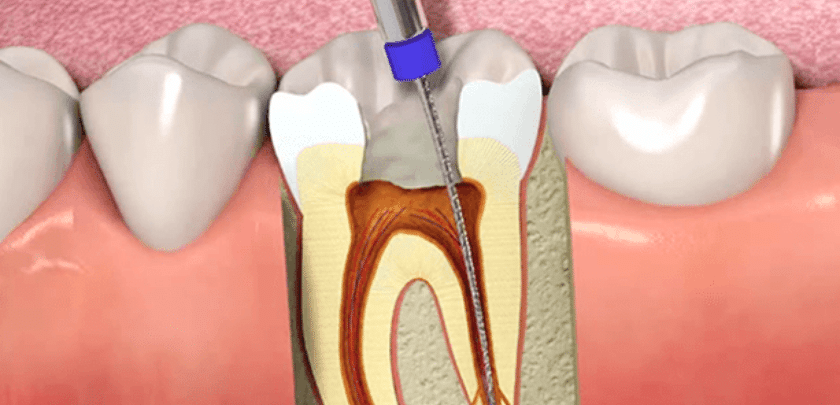What To Expect After A Root Canal?
Root canal treatment, also known as endodontic therapy, is a dental procedure performed to treat infection or damage deep within the tooth’s pulp. While the thought of undergoing a root canal may evoke fear or anxiety in some individuals, it is a common and relatively straightforward procedure aimed at saving a severely damaged or infected tooth. After undergoing a root canal, patients can expect a period of recovery and adjustment as the tooth heals and normal function is restored. In this article, we will explore what to expect after a root canal, including the recovery process, potential side effects, and tips for managing discomfort.
- Immediate Post-Procedure Care:
After the root canal procedure is completed, patients may experience numbness in the treated area due to local anesthesia. It is essential to follow any post-operative instructions provided by your dentist or endodontist to promote proper healing and reduce the risk of complications. Some common post-procedure care instructions may include:
- Avoid eating or drinking until the numbness wears off to prevent accidentally biting your cheek or tongue.
- Take any prescribed medications, such as antibiotics or pain relievers, as directed by your dentist.
- Apply an ice pack to the outside of your face near the treated tooth to reduce swelling and discomfort.
- Avoid strenuous physical activity or heavy lifting for the first few days following the procedure.
Discomfort and Pain Management:
It is normal to experience some discomfort or mild pain after a root canal procedure as the anesthesia wears off and the tooth begins to heal. However, the level of pain can vary depending on the severity of the infection or damage before treatment. Patients may experience:
- Sensitivity to hot or cold temperatures.
- Soreness or tenderness in the jaw or surrounding gums.
- Mild swelling or inflammation in the treated area.
To manage discomfort and pain after a root canal, consider the following tips:
- Take over-the-counter pain relievers, such as ibuprofen or acetaminophen, as recommended by your dentist.
- Avoid chewing on the side of the mouth where the root canal was performed until the tooth has fully healed.
- Rinse your mouth with warm salt water to help reduce inflammation and promote healing.
- Follow a soft diet consisting of easy-to-chew foods such as soup, yogurt, and mashed potatoes until any soreness or discomfort subsides.
Recovery Timeline:
The recovery timeline after a root canal can vary from patient to patient depending on several factors, including the extent of the infection or damage, the tooth’s location in the mouth, and the individual’s overall oral health. In general, most patients can expect the following timeline:
- The initial discomfort or pain typically peaks within the first 24 to 48 hours after the procedure and gradually improves over the next few days.
- Swelling and inflammation may peak within the first 72 hours and gradually subside over the course of a week.
- Full recovery and resolution of symptoms can take anywhere from a few days to a few weeks, depending on the complexity of the root canal and the individual’s healing response.
During the recovery period, it is essential to attend any follow-up appointments scheduled by your dentist or endodontist to monitor your progress and ensure proper healing. If you experience persistent or worsening symptoms, such as severe pain, swelling, or fever, contact your dentist immediately, as these may be signs of complications requiring further evaluation and treatment.
Long-Term Outlook:
In most cases, a successful root canal can provide long-term relief from pain and discomfort while preserving the natural tooth structure. However, it is essential to maintain good oral hygiene habits, including brushing and flossing regularly and attending routine dental check-ups, to prevent future problems such as recurrent decay or infection.
In some cases, additional dental procedures, such as a dental crown or restoration, may be recommended to strengthen and protect the tooth following a root canal. Your dentist will discuss any necessary follow-up treatment options and guide how to maintain the health and integrity of the treated tooth.
Potential Complications:
While root canal treatment is generally safe and effective, there is a small risk of complications, including:
- Incomplete removal of infected or damaged tissue.
- Damage to surrounding teeth or structures during the procedure.
- Development of a new infection or abscess following treatment.
- Fracture or weakening of the tooth structure over time.
To minimize the risk of complications, it is essential to choose an experienced and qualified dentist or endodontist to perform the root canal procedure and to follow all post-operative instructions carefully.
In conclusion, undergoing a root canal can provide much-needed relief from tooth pain and discomfort while preserving the natural tooth structure. By understanding what to expect after a root canal, including the recovery process, potential side effects, and tips for managing discomfort, patients can feel more informed and prepared to undergo this common dental procedure. If you have any questions or concerns about root canal treatment, be sure to discuss them with your dentist or endodontist to ensure the best possible outcome for your oral health.


